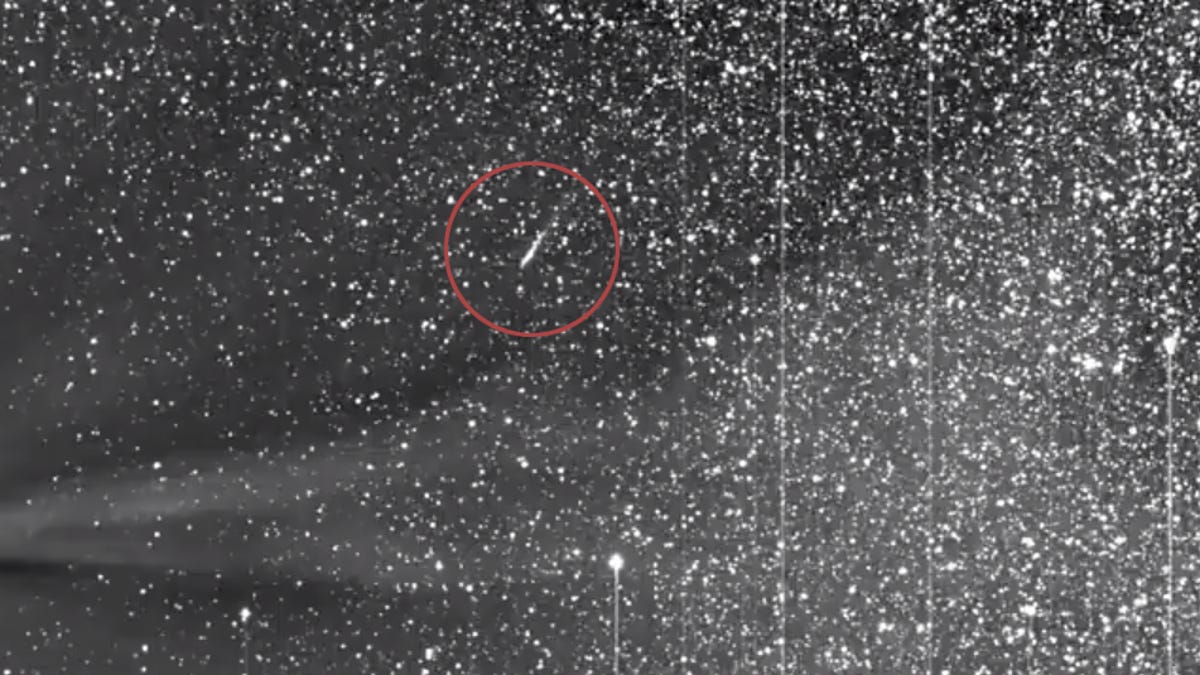NASA solar spacecraft captures comet Atlas streaking past the sun
Atlas shrugs off talk of disintegration in magnificent video, using images from the Stereo-A spacecraft.

Comet Atlas zips past the sun in images taken by NASA's Stereo-A spacecraft.
The captivating space snowball Comet Atlas (C/2019 Y4) has provided astronomers with a ton of great photo ops in the six months since it was first discovered. The cosmic wanderer is in an all-out death dive toward the sun and, having been heated by our home star, is slowly breaking apart. But it's still alive! And the latest batch of images from a NASA spacecraft show the comet's journey past the sun in exquisite detail.
On Wednesday, Karl Battams, an astrophysicist at the Naval Research Laboratory, posted a magnificent short video of Atlas on its way through the solar system. Battams lead the Sungrazer Project, which uses images from solar telescopes maintained by NASA and the European Space Agency to look for moving objects around our star.
Battam's processed animation uses a series of images from NASA's Stereo-A spacecraft, a space-based observatory studying the sun, from May 30. Against a backdrop of stars, Atlas moves through the image on its journey through the solar system.
With some new image processing, here's a short animation of comet ATLAS in the @USNRL HI-1 field of view on @NASASun STEREO-A. (Full movie in next tweet.)
— Karl Battams (@SungrazerComets) June 2, 2020
Of note: Check out Mercury as it enters the upper-left corner of this field of view... Yes, Mercury has a tail! ☀️☄️ pic.twitter.com/MDo5jFHa1v
The end result is stunning, but spacecraft imagery, Battams says, is "not inherently pretty".
"There are always various instrumental and astronomical effects in the raw data that we need to remove to better enhance the features we're interested in," he says. In this case, Battams averaged out the background to help contrast it against the comet
But Atlas isn't the only interesting phenomenon appearing in the animation. Because the footage is captured by Stereo-A's heliospheric imagers, which are able to detect the solar wind, ghostly wisps of the stellar outflows are visible.
Another bonus? The planet Mercury, which sneaks into view from the upper-left quadrant as the animation continues. As Battams notes in his tweet, Mercury "has a tail," a trail of gas caused by the solar winds that pass over the planet. Mercury recently reached perihelion -- the point in its orbit closest to the sun -- when it was around 29 million miles from the star.
Atlas' closest approach to the sun was scheduled for May 31. Battams noted in a subsequent tweet he hopes to update the animation with further data in the coming days. Some astronomers have suggested Atlas could even disintegrate into "a haze of dust and gas" on closest approach.
The European Space Agency's Solar Orbiter, which launched in February to study the sun, passed through the comet's ion tail between May 31 and June 1 and is expected to pass through its dust tail on June 6 -- giving astronomers a rare chance to study the space rock in greater detail.
You can watch the full video below:

